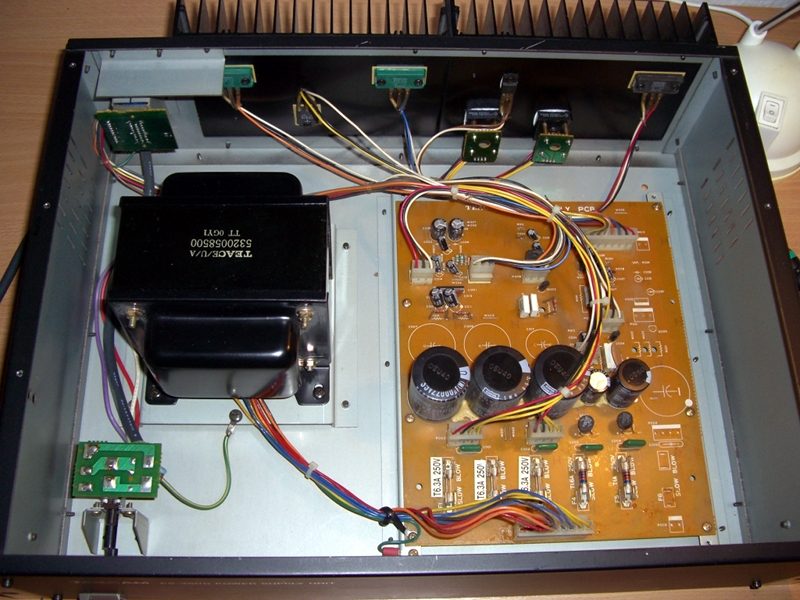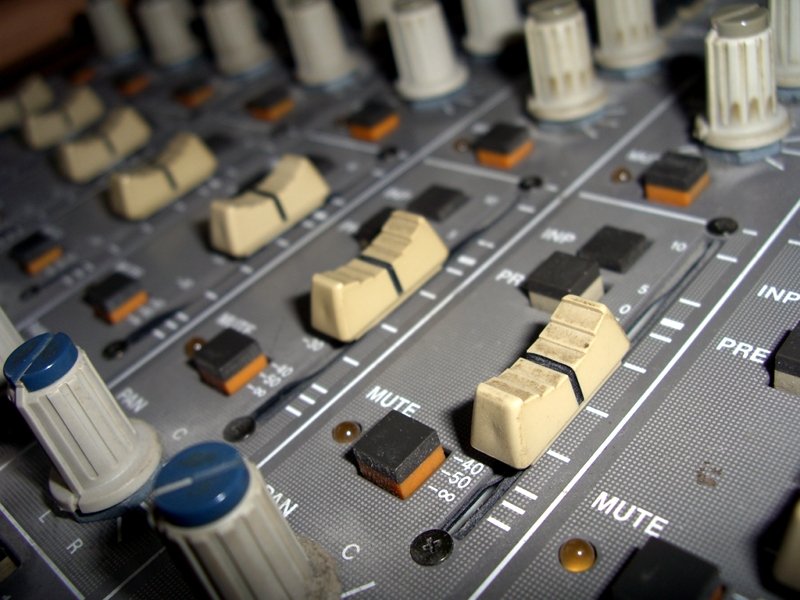timkroeger
Custom Title User
Today I started to clean up and fix my M-3500 console. I'll post here what I did and what problems got in my way. First of all the console seems to work fine. It needs a thorough cleaning (on the outside and the inside) and some of the pots and faders are crackling a little. That crackling goes away after moving the fader/pot a little. The shaft of the Control Rook Solo Volume Pot is broken (and it's plastic) so the pot needs replacing. I'm sure I'll get it through a local dealer or at least through Teac support.
So, I thought I should have a look at the power supply first and clean it up. It's not 100% perfect but it's ok for me. I'll settle for 90% Have a look below or click on the images to find more detailed before/after shots.
Have a look below or click on the images to find more detailed before/after shots.
before

after

I wanted to check the voltages to see if something might be wrong with the PSU and almost all voltages (-15, +15, +12, +8, +40) were off (lower) by about 40%! So I checked my multimeter - a cheap Renkforce DMM 1900 - by just plugging it into the AC outlet. Surprise! Same 40% off. So... it could be I need a new meter, or I need a new battery. But how to measure the battery when you don't have a working multimeter lying around OR some batteries left? The battery passed the tongue test, but I'll get some new batteries and hopefully it's still functional. Otherwise I'll be on the lookout for a cheap fluke (110 anyone?) or an old bench meter like the 8050A. What do you think?
So I checked my multimeter - a cheap Renkforce DMM 1900 - by just plugging it into the AC outlet. Surprise! Same 40% off. So... it could be I need a new meter, or I need a new battery. But how to measure the battery when you don't have a working multimeter lying around OR some batteries left? The battery passed the tongue test, but I'll get some new batteries and hopefully it's still functional. Otherwise I'll be on the lookout for a cheap fluke (110 anyone?) or an old bench meter like the 8050A. What do you think?
I've put up a site where I post photos and information like what capacitors might need replacing and will also try to update this thread accordingly. I've added a list of what caps are used in the PS-3500 power supply, too and I will post my voltage readings and o'scope graphs when I'm measuring ripple.
Cheers
Tim
So, I thought I should have a look at the power supply first and clean it up. It's not 100% perfect but it's ok for me. I'll settle for 90%
 Have a look below or click on the images to find more detailed before/after shots.
Have a look below or click on the images to find more detailed before/after shots.before

after

I wanted to check the voltages to see if something might be wrong with the PSU and almost all voltages (-15, +15, +12, +8, +40) were off (lower) by about 40%!
 So I checked my multimeter - a cheap Renkforce DMM 1900 - by just plugging it into the AC outlet. Surprise! Same 40% off. So... it could be I need a new meter, or I need a new battery. But how to measure the battery when you don't have a working multimeter lying around OR some batteries left? The battery passed the tongue test, but I'll get some new batteries and hopefully it's still functional. Otherwise I'll be on the lookout for a cheap fluke (110 anyone?) or an old bench meter like the 8050A. What do you think?
So I checked my multimeter - a cheap Renkforce DMM 1900 - by just plugging it into the AC outlet. Surprise! Same 40% off. So... it could be I need a new meter, or I need a new battery. But how to measure the battery when you don't have a working multimeter lying around OR some batteries left? The battery passed the tongue test, but I'll get some new batteries and hopefully it's still functional. Otherwise I'll be on the lookout for a cheap fluke (110 anyone?) or an old bench meter like the 8050A. What do you think?I've put up a site where I post photos and information like what capacitors might need replacing and will also try to update this thread accordingly. I've added a list of what caps are used in the PS-3500 power supply, too and I will post my voltage readings and o'scope graphs when I'm measuring ripple.
Cheers
Tim

 )
)

















 I should have listened to my gut feeling when I applied it to the first fader and I thought how this mess is going to improve things. Very "luby". If it turns out bad I'll clean it up again (at least on the faders). I also tried it on the pots and we'll see how that turns out. At the rate this stuff is sold, I'm not too sad that I need not use it. I have some testanol t6 contact treatment spray left, I think I'll do some more digging first or try the D-100.
I should have listened to my gut feeling when I applied it to the first fader and I thought how this mess is going to improve things. Very "luby". If it turns out bad I'll clean it up again (at least on the faders). I also tried it on the pots and we'll see how that turns out. At the rate this stuff is sold, I'm not too sad that I need not use it. I have some testanol t6 contact treatment spray left, I think I'll do some more digging first or try the D-100.














